Neuro PlayGround Lite (NPG Lite) Beast Pack is your all-in-one, expandable platform for exploring Human-Computer Interfaces (HCI) and Brain-Computer Interfaces (BCI). It comes with the NPG Lite board, the VibZ+ Playmate, and support for 3rd-party FeatherWing boards—so you can easily add features like haptic feedback, audio cues, and I2C connectivity.
With our Chords software suite (Chords-Web, Chords-Python, Chords LSL Connector & Visualizer), you can see your biosignals in real-time, apply filters, run FFT analysis, and much more. Updating your device is simple with the NPG Lite Flasher, letting you use pre-built firmware or flash your own custom programs.
The VibZ+ Playmate adds a 3-channel BioAmp, letting you record up to 6 biosignal channels at once—ideal for multi-channel EEG, EMG, or advanced biofeedback experiments.
Why We Call It the “Beast Pack”
- Read Up to 6 Signals at Once: Most kits stop at one or two channels. The Beast Pack lets you record data from six different spots on the body at the same time. This is huge for getting a more complete picture, whether you’re studying the brain or seeing how different muscles work together.
- Everything You Need Is in the Box: Forget hunting for the right cables or sensors. We’ve included the main NPG Lite board, the powerful VibZ+ add-on, a protective case, all the snap and alligator cables you’ll need, and a pack of 24 gel electrodes. Just open the box and start exploring.
- See Your Signals, Live: What good is data if you can’t see it? Our free, open-source Chords software shows you the signals from your body live on your computer screen. You can clean them up with filters, analyze them, and see what’s really going on under the skin.
- No More Wires: No one likes being tangled in cables. The NPG Lite is wireless and can send data over Bluetooth or Wi-Fi. You can move around freely, making it perfect for creating wearable gadgets or interactive projects.
- Feel and Hear Your Data: The included VibZ+ board has a tiny vibration motor and a buzzer. This means you can create projects that give you real-time feedback—like a buzz when your muscle tenses or a beep that matches your heart rate.
What’s in the Box?
- 1x Neuro PlayGround Lite (NPG Lite) Board
- 1x VibZ+ Playmate
- 13x Snap Cables
- 8x Alligator Cables
- 24x Gel Electrodes
- 1x Battery Connector
- 1x USB Type-C Cable
- 1x 3D-Printed Protective Case
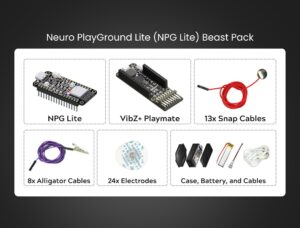
A Closer Look at the Neuro PlayGround Lite
The Neuro PlayGround Lite is the powerful core of this kit, built around an ESP32-C6 chip to provide a full range of wireless options including Wi-Fi, Bluetooth BLE, Thread, and Zigbee. On its own, the board features three built-in BioAmp channels for capturing signals and six programmable RGB LEDs for instant visual feedback. It includes modern conveniences like a USB-C port for programming and LiPo battery charging, all within the versatile Feather form factor for future expansion.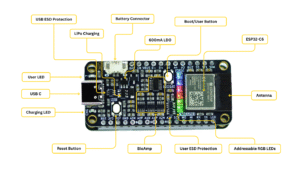
NPG VibZ+ Playmate
VibZ+ Playmate builds on the VibZ by including an additional 3-channel BioAmp, making it possible to record and visualize up to 6 Biosignal channels simultaneously. It retains the vibration motor for haptic feedback, buzzer for auditory cues, ON/OFF slide switch, QWIIC port, and electrode connector interface. This makes VibZ+ ideal for experiments where higher-resolution input or greater spatial coverage is essential, such as multi-channel EEG, EMG, or complex biofeedback applications.
Compatible Software
NPG Lite Flasher
- NPG Lite Flasher is a cross-platform, flashing utility for the Neuro PlayGround Lite board, providing seamless firmware updates over serial or DFU via a simple GUI to know more about NPG Lite Flasher watch the YouTube video.
Chords Python
- Chords Python is an open-source bag of tools for recording biopotential signals like ECG, EMG, EEG, or EOG, along with visualization using BioAmp hardware to know more about Chords Web watch the YouTube video.
Chords Web
- Visit Chords Web for real-time biopotential signal visualization (EEG, EMG, ECG, EOG), featuring advanced plotting, filtering, snapshotting and CSV recording to know more about Chords Web watch the YouTube video.
Chords LSL Connector
- Chords LSL Connector is a Rust based bridge that streams data from devices running Chords firmware into the Lab Streaming Layer (LSL), enabling synchronized acquisition and analysis with BCI/EEG software.
Chords LSL Visualizer
- Chords LSL Visualizer is a Rust based program to visualize biopotenial signals from any LSL stream.
Project Tutorials
NPG Lite, with its multi-channel BioAmp, wireless connectivity, battery operation, and expansion interface, allows users to create HCI and BCI applications with ease. We’ve created projects leveraging ECG, EMG, EOG, and EEG signals to inspire you, but the possibilities cover so many more use cases.
Each of these projects runs on the BLE firmware, which you can flash using the following flasher tools:
- We recommend using NPG Lite Flasher for flashing BLE Firmware.
- Alternatively, you can use Arduino IDE to manually upload the firmware.
1.Make Muscular Music
This is a human-computer interface (HCI) that uses 3-channel EMG data to detect muscle signals from the left hand, right hand, and chest to control virtual musical instruments. When muscles contract, each channel triggers a distinct sound effect, transforming your body into an organic orchestra.
-
To learn about this project, visit our Instructables page for detailed guide: Muscle Melody: Create Music With Your Muscle Movements (EMG)
-
Visit the Web Interface to visualize in real time.
VIDEO:
2. Track Your Ticker
This project focuses on capturing electrocardiogram (ECG) signals to calculate heart rate using Neuro PlayGround Lite and displaying them in a Chrome-based browser on a mobile phone in real-time via a Bluetooth LE connection.
-
To learn about this project, visit our Instructables page for detailed guide: Monitor ECG and Heartrate on Your Mobile Phone
-
Visit the Web Interface to visualize in real time.
3. Jump In the Blink of an Eye
Instead of using the keyboard, you can control a game simply by blinking. The setup detects EOG signals from the eyes, sends the data over Bluetooth LE to the PC, detects eye blinks, and then takes the eye blink as a trigger to emulate the spacebar keystroke. You can configure the code to simulate any other keystroke as well.
To learn about this project, visit our Instructables page for detailed guide: Controlling Keyboard With Eye Blinks Using Neuro PlayGround Lite
4. Pop Bubbles With Your Mind
This project showcases a brain-computer interface (BCI) application that utilizes EEG (electroencephalography) signals to operate an interactive bubble-popping game in a web browser. The system identifies beta wave activity (12–30 Hz), indicating concentration and attention levels. Bubbles appear and pop as the user maintains focus, but they cease to pop when concentration wanes.
-
To learn about this project, visit our Instructables page for detailed guide: Pop Bubbles With Your Mind (EEG) | Neuro PlayGround (NPG) Lite
-
Visit the Web Interface to visualize in real time.
5. CortEX
CortEX is an open-source neurofeedback meditation platform that combines EEG and ECG signals to provide real-time feedback on your mental and emotional state. Designed to enhance mindfulness, it visualizes brainwave activity, heart rate, and hemisphere balance to help you meditate more effectively – all from your browser, using the NPG Lite device.
Note
-
To learn about this project, visit our Instructables page for detailed guide: A Neurofeedback Meditation Journey
-
Visit the Web Interface to visualize in real time.
6. Playing GTA V with Your Focus & Muscles | BCI + EMG with NPG Lite
7. Brain-Controlled Car: EEG + EMG Robotic Control
The Brain-Controlled Car transforms brainwaves (EEG) and muscle activity (EMG) into real-time robotic control, letting you steer a car without traditional remotes – just focus your mind to move forward, flex your left or right arm to turn, or both arms to reverse. Powered by the Neuro PlayGround Lite, a wireless biopotential device, the system captures your signals via electrodes and transmits them over BLE to an ESP32-based receiver that drives the motors. This project offers a hands-on glimpse into the future of human–machine interaction, where thoughts and movements seamlessly command machines.
Note
-
To learn about this project, visit our Instructables page for detailed guide: Brain-Controlled Car :EEG + EMG Robotic Control
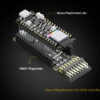
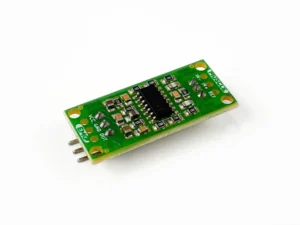
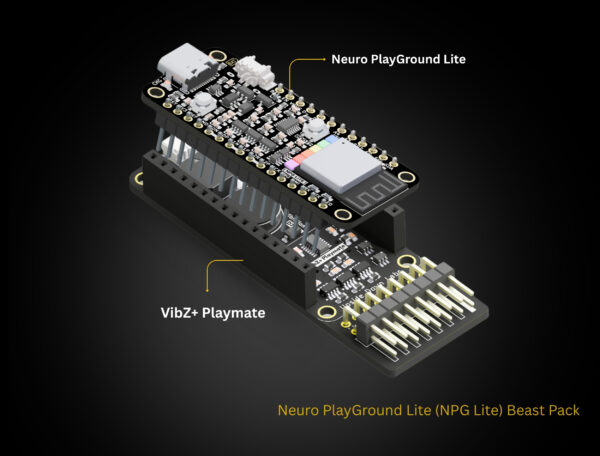
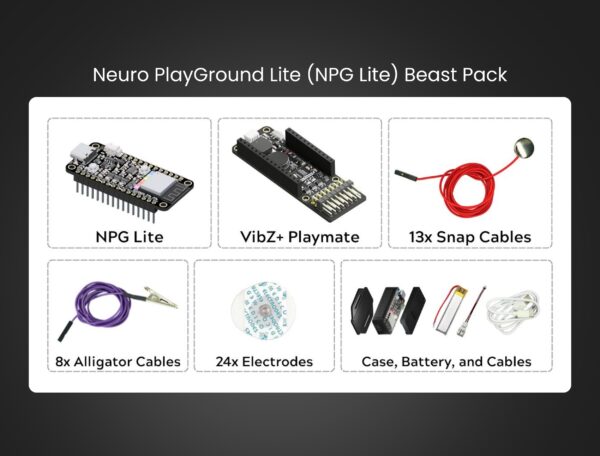
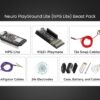




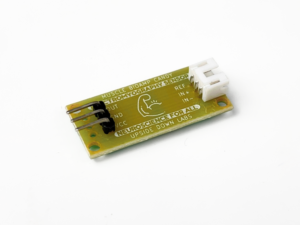
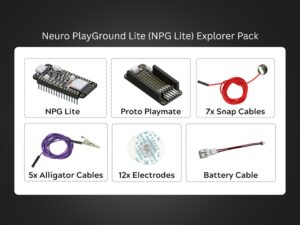
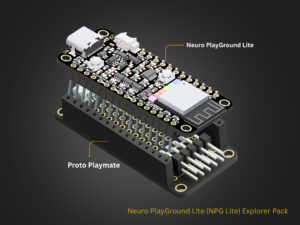
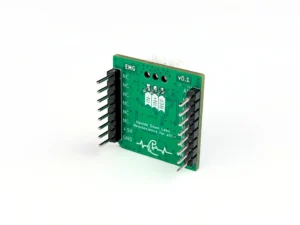


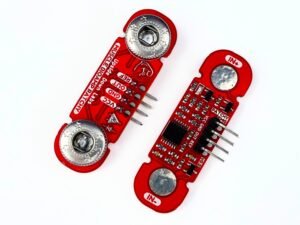


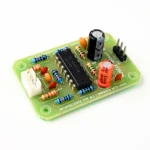
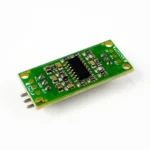
Reviews
There are no reviews yet.